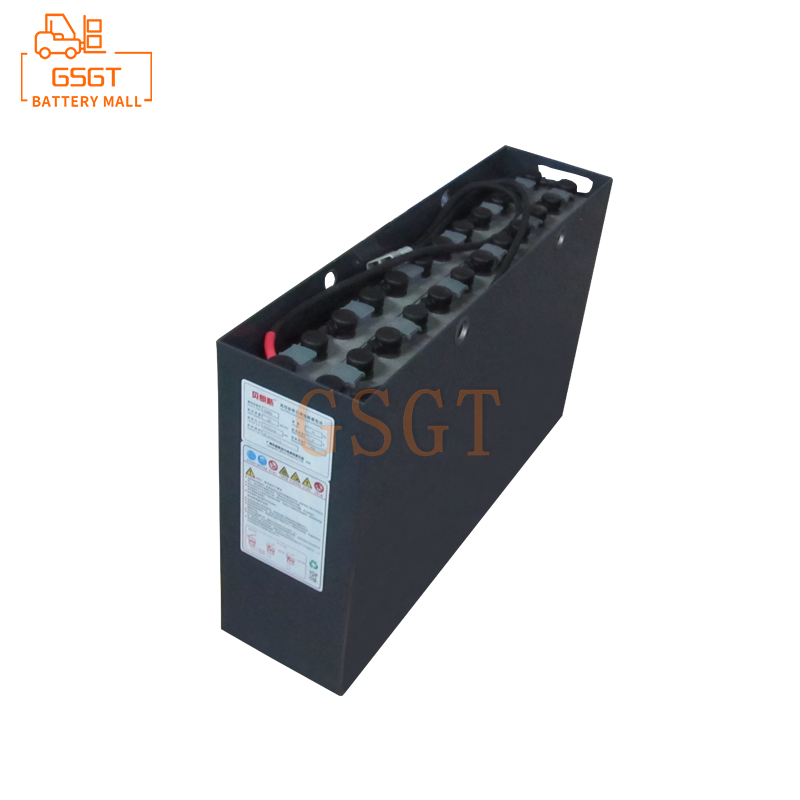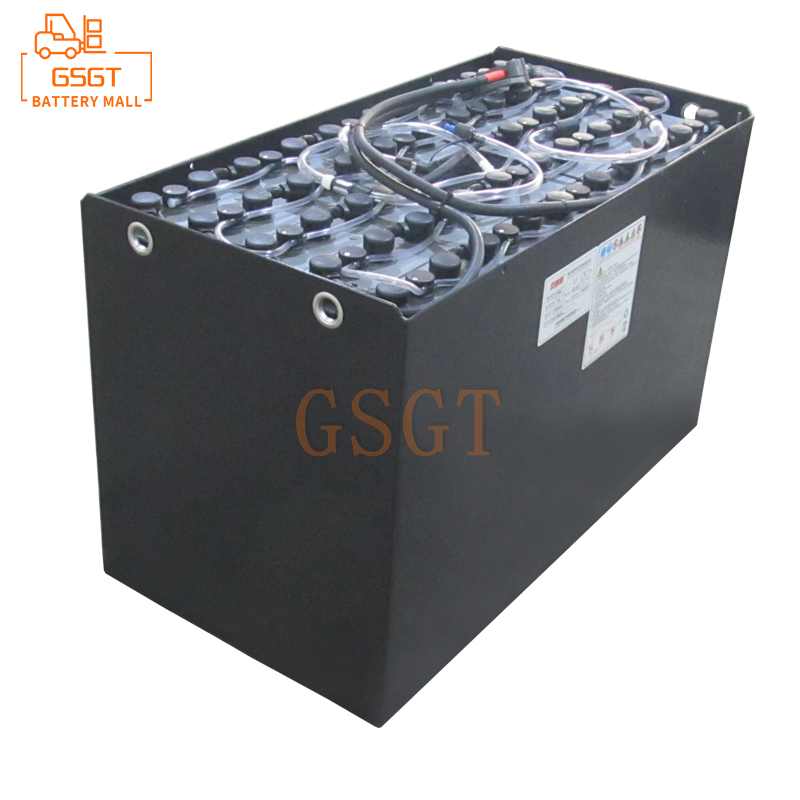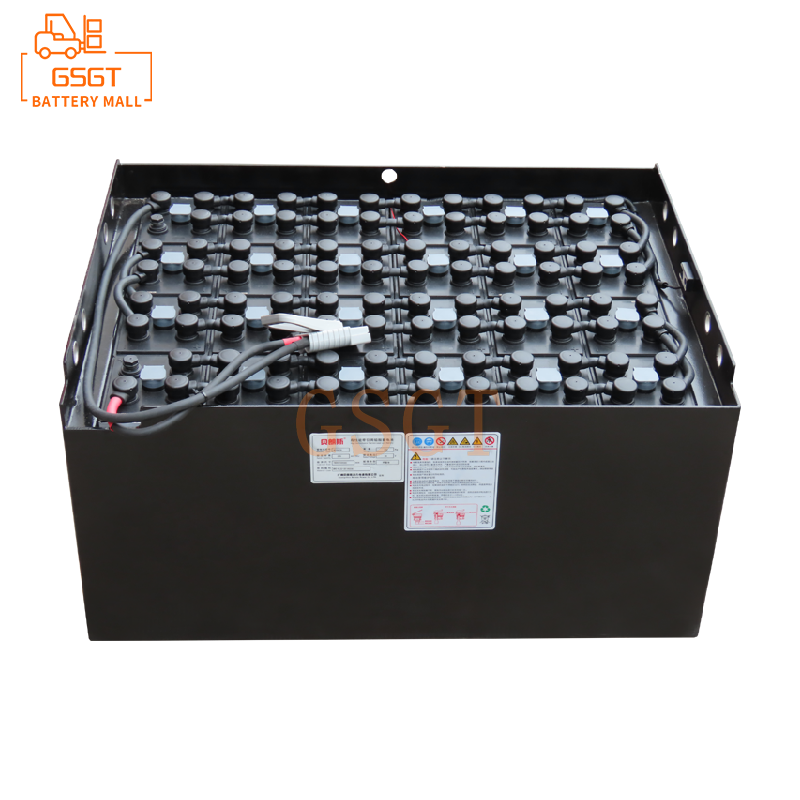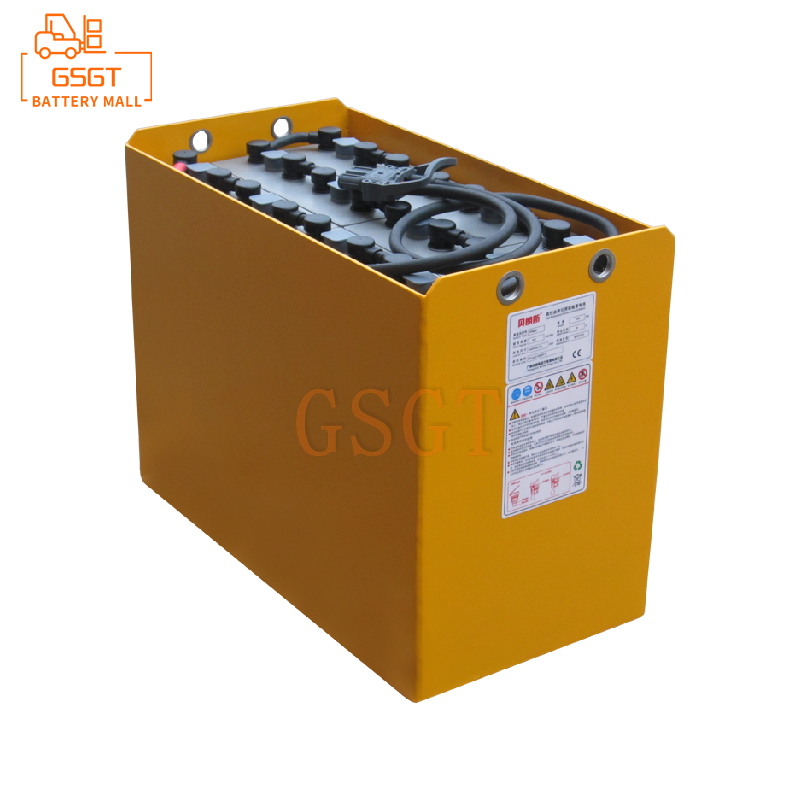Time:2025-06-17 10:25:58
Browse:588
In the modern logistics and warehousing field, forklifts, with their high efficiency and flexibility, have become the core equipment for goods handling and stacking operations. As the main power source of forklifts, the safety of the charging process of lead-acid batteries not only directly affects the normal operation of forklifts, but is also closely related to the safety of personnel in the workplace, equipment maintenance costs and environmental protection. To standardize the charging operation of lead-acid batteries in forklifts, effectively prevent safety accidents, and ensure the smooth progress of production activities, this safety specification is specially formulated, covering multiple key links such as pre-charging preparations, charging process operations, handling of abnormal situations, and daily maintenance.
1. Preparations before charging
(1) Venue Requirements
1. ** Independent Charging area setting ** : The charging of forklift lead-acid batteries must be carried out in a specially designated independent area, which should be far away from the storage areas of flammable and explosive materials, densely populated areas, and water sources. The floor of the charging area should be paved with acid-resistant, fireproof and anti-slip materials to prevent battery leakage from corroding the floor and reduce the risk of people slipping.
2. ** Ventilation conditions ** : During the charging process of lead-acid batteries, flammable gases such as hydrogen are released. If they accumulate to a certain concentration, they can easily cause an explosion when exposed to open flames or static electricity. Therefore, the charging area should be equipped with good ventilation facilities, such as exhaust fans, to ensure smooth air circulation and timely discharge of harmful gases. The ventilation system should ensure that the air change rate is no less than 6 times per hour to maintain the hydrogen concentration in the charging area below 25% of the lower explosive limit.
3. ** Fire-fighting Facilities ** : The charging area must be equipped with sufficient and applicable fire-fighting equipment, such as dry powder fire extinguishers, carbon dioxide fire extinguishers, etc., and ensure that the operators are familiar with their usage methods. At the same time, fire warning signs and emergency evacuation route signs should be set up in prominent positions to ensure that people can evacuate quickly in case of emergencies such as fires.
(2) Equipment Inspection
1. ** Battery Appearance Inspection ** : Before performing the charging operation, a comprehensive appearance inspection of the battery is required. Check whether the battery case is damaged or cracked, whether the terminal posts are loose or corroded, and whether the exhaust holes are blocked, etc. If the casing is found to be damaged, the battery should be stopped from use immediately and professional personnel should be contacted for handling to prevent electrolyte leakage from causing environmental pollution and personal injury.
2. ** Inspection of Charging Equipment ** : Check whether the appearance of the charger is intact, and whether the power cord and plug are damaged or exposed. Confirm that the model and specification of the charger match the battery. It is strictly forbidden to use an incompatible charger for charging to avoid damaging the battery or causing safety accidents. At the same time, check whether the grounding of the charging equipment is good. The grounding resistance should meet the relevant standard requirements and generally should not exceed 4 ohms.
3. ** Tool Preparation ** : Prepare the necessary operating tools, such as insulating gloves, goggles, acid-resistant aprons and other protective supplies, as well as maintenance tools like wrenches and screwdrivers. These tools should be placed in easily accessible locations to ensure that operators can quickly obtain them when performing charging operations and simple maintenance.
(3) Requirements for Operators
1. ** Training and Qualifications ** : All personnel involved in the operation of charging lead-acid batteries for forklifts must undergo professional training, be familiar with the working principle, charging process and safety precautions of lead-acid batteries, and obtain the corresponding operation qualifications. Untrained or unqualified personnel are strictly prohibited from performing charging operations.
2. ** Safety Awareness ** : Operators should have a high level of safety awareness and strictly abide by this safety regulation and relevant operating procedures. During the operation process, one must not leave or switch posts without permission, and must not engage in activities unrelated to the charging operation. At the same time, it is necessary to constantly monitor the operating status of the charging equipment and the battery. If any abnormal situation is found, measures should be taken promptly to handle it.
2. Operation Norms for the charging process
(1) Connection and Startup
1. ** Correct connection ** : When connecting the battery to the charger, first disconnect the negative terminal connection wire of the battery, then disconnect the positive terminal connection wire, and then connect the positive and negative terminals of the charger to those of the battery accordingly. During the connection process, it is necessary to ensure a firm connection to avoid phenomena such as heating and sparking caused by poor contact. After the connection is completed, check whether there is any loosening, oxidation or other conditions at the connection parts.
2. ** Start charging ** : After confirming that the connection is correct, first turn on the power switch of the charger, and then set the charging parameters, such as charging current and charging time. The setting of charging parameters should be adjusted according to the model, capacity and usage conditions of the battery in accordance with the manufacturer's manual. After the Settings are completed, press the start button to begin charging. At the moment of charging and starting, the operator should maintain a safe distance to avoid danger caused by electric sparks.
(2) Charging process monitoring
1. ** Voltage and Current Monitoring ** : During the charging process, the operator should regularly monitor the voltage and current of the battery, generally recording the data every 15 to 30 minutes. Observe whether the changes in voltage and current conform to the normal charging curve. If abnormal fluctuations in voltage and current are detected, such as excessively high or low voltage, sudden increase or decrease in current, etc., stop charging immediately and check whether there are any faults in the charging equipment and battery.
2. ** Temperature Monitoring ** : Lead-acid batteries generate a certain amount of heat during the charging process. If the temperature is too high, it will affect the performance and lifespan of the battery, and may even cause safety accidents. Therefore, a thermometer should be used to monitor the surface temperature of the battery. During the charging process, the temperature of the battery should not exceed 45℃. When the temperature approaches or exceeds 45℃, measures such as reducing the charging current and enhancing ventilation should be taken to cool down. If the temperature continues to rise, charging should be stopped and resumed only after the temperature drops to the normal range.
3. ** Electrolyte Inspection ** : During the charging process, the electrolyte level of the battery should be checked regularly. The electrolyte level should be maintained between the upper and lower limit mark lines. If the level is too low, distilled water or special lead-acid battery replenishment liquid should be added. It is strictly forbidden to add tap water or other liquids containing impurities. When adding the electrolyte, do it slowly to prevent it from splashing and injuring people. At the same time, check whether the density of the electrolyte meets the requirements. If the density is abnormal, the electrolyte should be adjusted or replaced.
(3) Charging completion operation
1. ** Stop charging ** : When the battery reaches the specified charging time or parameters such as voltage and current reach the set values, charging should be stopped promptly. First, press the stop button of the charger, then turn off the power switch of the charger, and then disconnect the charger from the battery. The sequence of disconnection is the reverse of the connection process, that is, disconnect the positive terminal connection wire first, and then the negative terminal connection wire.
2. ** Cleaning and Inspection ** : After charging is completed, use a clean cloth to wipe off the electrolyte and dust on the surface of the battery to keep it clean and dry. Check whether there is any overheating or oxidation in the battery terminals, connecting wires and other parts. If any problems are found, deal with them in time. At the same time, inspect the charging equipment, turn off the power, clean the dust and debris on the surface of the equipment, and store the charging equipment properly.
3. Handling of Abnormal Situations
(1) Overcharging
If overcharging of the battery is detected, such as intense boiling of the electrolyte, excessively high temperature, or deformation of the casing, charging should be stopped immediately. Disconnect the battery from the charging device and place it in a well-ventilated area to cool naturally. After the battery temperature drops to the normal range, check the liquid level and density of the electrolyte. If too much electrolyte is lost, add distilled water or supplementary liquid and adjust the density of the electrolyte to an appropriate range. At the same time, check whether the parameter Settings of the charging equipment are correct to avoid overcharging from happening again.
(2) Electrolyte leakage
When leakage of the battery electrolyte is detected, the operator should immediately wear protective equipment such as insulating gloves, goggles, and acid-resistant aprons. Collect the leaked electrolyte in acid-resistant containers to prevent it from flowing into sewers or polluting the soil. For the electrolyte that leaks on the ground, it can be neutralized with alkaline substances such as lime and baking soda, and then the ground should be rinsed with a large amount of clean water to ensure that there is no residual electrolyte on the ground. Leaked batteries should be repaired or replaced in a timely manner and must not be used any longer.
(3) Fire Accidents
In the event of a fire in the charging area, the operator should immediately cut off the power supply of the charging equipment and use nearby fire-fighting equipment to extinguish the fire. If the fire is too large to be extinguished by yourself, you should immediately call the fire alarm number 119 and organize the evacuation of people. During the evacuation process, evacuate in an orderly manner according to the direction indicated by the emergency evacuation passage signs to avoid congestion and stampede accidents. After the fire is extinguished, conduct a comprehensive inspection of the charging equipment and batteries. Only after confirming that there are no safety hazards can they be put back into use.
4. Daily Maintenance and Care
(1) Battery maintenance
1. ** Regular Inspection ** : Regularly conduct visual inspections of the battery, voltage measurements, electrolyte level and density checks, etc., generally once a week. Problems existing in the battery can be detected in a timely manner through inspection, and corresponding measures can be taken to deal with them to ensure that the battery is in good working condition.
2. ** Charge and Discharge Management ** : Reasonably control the depth of charging and discharging of the battery to avoid over-discharging and overcharging. Under normal circumstances, when the battery voltage drops to the specified discharge termination voltage, charging should be carried out in a timely manner. At the same time, regularly perform full charging and discharging on the battery to activate the active substances on the battery plates and extend the service life of the battery.
3. ** Cleaning and Maintenance ** : Keep the surface of the battery clean and dry. Regularly wipe the dust and electrolyte on the battery surface with a clean cloth to prevent terminal post corrosion and short circuit. Check whether the fixing device of the battery is firm to ensure that the battery does not shake or shift during the operation of the forklift.
(2) Maintenance of charging equipment
1. ** Cleaning and Inspection ** : Regularly clean the charging equipment, remove dust and debris from the surface of the equipment to prevent dust from entering the interior and affecting its normal operation. Check whether the power cord, plug, socket and other components of the charging equipment are damaged or aged. If any problems are found, replace them in time.
2. ** Performance Testing ** : Regularly test the output voltage, current and other performance parameters of the charging equipment to ensure that its performance meets the requirements. A comprehensive performance test is generally conducted once every six months, and the test work should be carried out by professionals.
3. ** Fault Repair ** : When the charging equipment malfunctions, its use should be immediately stopped and professional maintenance personnel should be contacted for repair. Non-professionals are strictly prohibited from disassembling or repairing the charging equipment without authorization to avoid causing greater damage or safety accidents.
5. Summary
The safety standards for charging lead-acid batteries in forklifts are an important foundation for ensuring the safe and efficient operation of logistics and warehousing operations. From the site planning, equipment inspection and personnel training before charging, to the standardized operation and real-time monitoring during the charging process, and then to the proper handling of abnormal situations as well as daily maintenance and upkeep, every link is of vital importance. Only by strictly adhering to this safety regulation, strengthening safety management, and enhancing the safety awareness and operational skills of operators can we effectively prevent the occurrence of safety accidents, extend the service life of lead-acid batteries and charging equipment, reduce the operating costs of enterprises, and provide a solid guarantee for the sustainable development of enterprises. Meanwhile, with the continuous development and progress of technology, relevant safety regulations should also be constantly updated and improved to meet new demands and challenges.

$1060

$3050

$5710

$1690

MESSAGE
Professional And Efficient
Security
Affordable Price
Professional Services